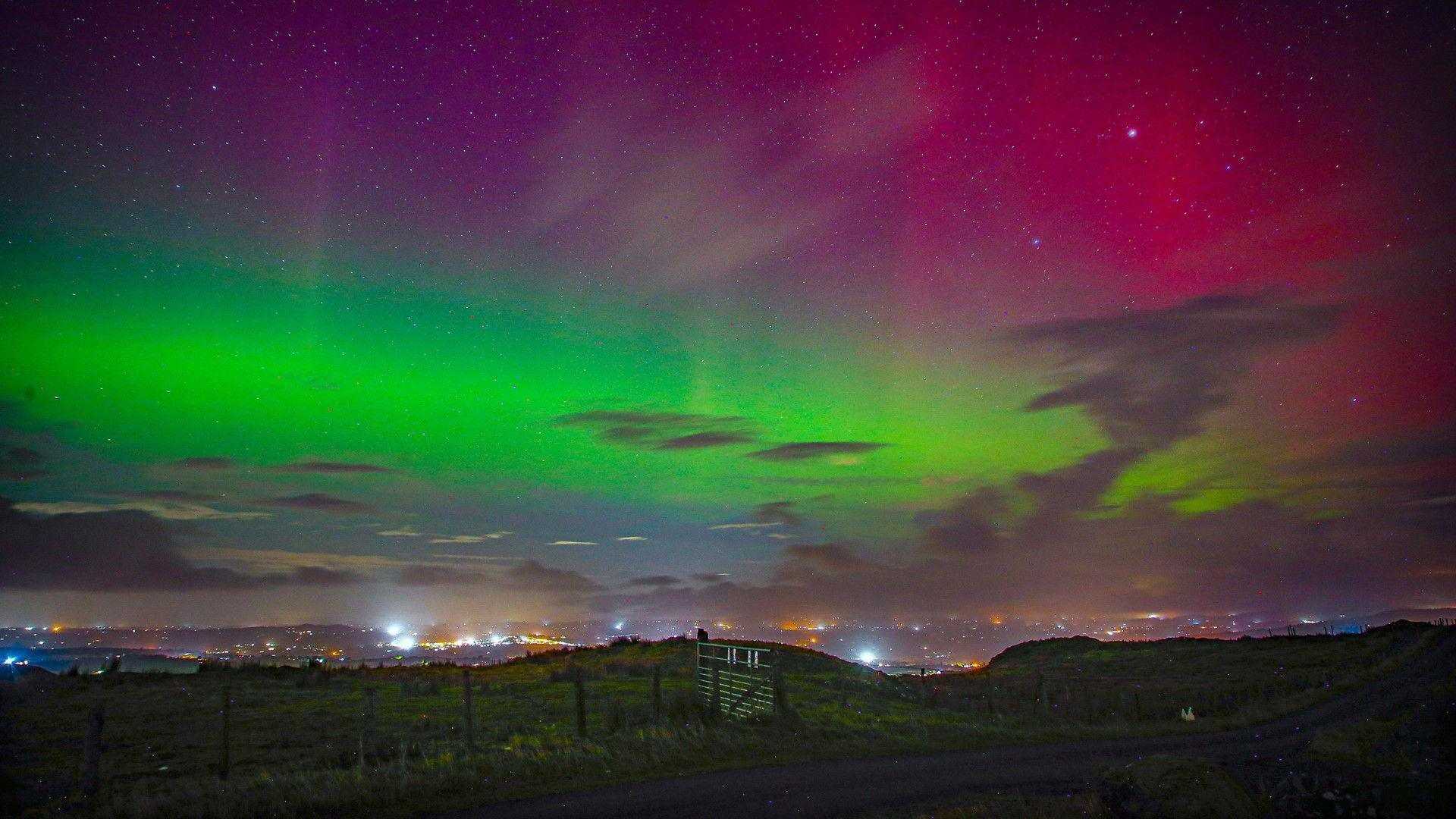News
Aurora Borealis Expected Over Northern Ireland Due to Solar Activity

Stargazers in Northern Ireland have a promising opportunity to witness the Northern Lights on Thursday night, as the Met Office predicts a strong chance of the aurora becoming visible in the region. This prediction is due to heightened solar activity creating favorable atmospheric conditions for the dazzling natural phenomenon.
The Northern Lights, also known as the aurora borealis, are vibrant displays of light usually observed near polar regions. These lights are formed when charged particles from the sun, referred to as solar winds, collide with gases in Earth’s atmosphere. The upcoming aurora in Northern Ireland comes during a year marked by numerous sightings, attributed to the sun’s “solar cycle,” a natural pattern of activity occurring every 11 years.
Krista Hammond, the Met Office space weather manager, explained, “The sun goes from solar minimum, where we see very few sunspots, to solar maximum, where we see the most.” She added that sunspots are responsible for solar storms, which, in turn, create the Northern Lights. “As it is now, we are at what is expected to be the solar maximum, so we are seeing a lot of sunspots and more frequent auroras,” Hammond noted.
This year, Northern Ireland has benefitted from its proximity to the northern horizon, allowing residents to witness these rare displays more frequently. However, the vividness of the lights often requires cameras for optimal observation, a fact underscored by John Fagan, who manages the Facebook page Irish Aurora Chasers. Fagan advised, “You can definitely see the aurora with the naked eye, including all of the various colors, but you need to be away from any light pollution for the best chance of seeing the lights.” He recommended heading to the coasts and minimizing vehicle headlights to avoid disturbing the spectacle.
Clear skies are essential for viewing the aurora, and Thursday’s weather forecast suggests there will be patches of clear skies, enhancing chances of seeing the display. The reason for the heightened visibility on Thursday night is a geomagnetic storm triggered by a burst of solar energy reaching Earth’s atmosphere. Such events can intensify auroras, making them visible at lower latitudes than usual.
In addition to Northern Ireland, a severe solar storm means that the Northern Lights could also be visible across parts of the UK for several nights. The Met Office conveyed this via a social media post, noting, “A coronal mass ejection from the sun is earthbound and whilst there’s some uncertainty on its arrival time, sightings of the #aurora are likely in northern areas with a slight chance in the south too.”
This statement comes alongside rare sightings earlier this year in locations such as London during both the Perseid meteor shower in August and prominently in May. To enhance viewing experiences, it’s advisable to seek dark, open areas away from light pollution. The appearance of the aurora often features large swaths of color ranging from pale greens to vibrant reds and violets, ideally seen in total darkness and due north.












